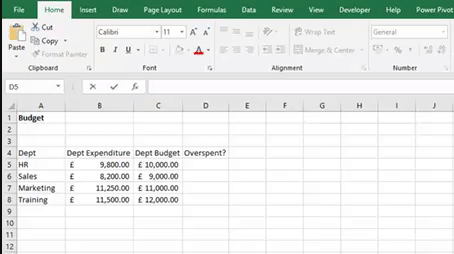
An IF formula is where we give Excel a statement and it will return an answer based on that statement. For example, if expenditure is greater than budget then return overspent, otherwise return under budget.
The Syntax for an IF formula is IF(Logical_Test, Value_if_True, Value_if_False)
The Logical Test is the statement that Excel uses to be able to return the right answer. In the Logical Test we must use Conditional Logic symbols which are > (greater than), < (less than), >= (greater than or equal to), <= (less than or equal to), = (equal to), <> (not equal to).
Value if True is the answer you want Excel to return if the Logical Test is met.
Value if False is the answer you want Excel to return if the Logical Test isn’t met.
For your Value if True and Value if False you can use text (which must be in speech marks), cell references, numbers and formulas.